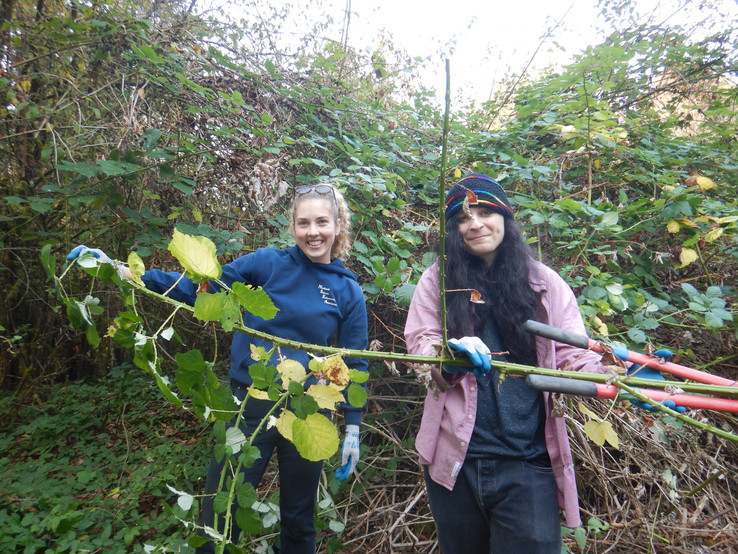
Southern Resident orcas are an iconic species of the Pacific Northwest, but one that will disappear if we do not all take action to support them. With only 73 Southern Resident orcas left, we must act now to preserve this species, and that is why over 65 community members in Whatcom County came out to California Creek October 15th for Orca Recovery Day.

Orca Recovery Day was created in 2018 by Conservation Districts across the Salish Sea as a response to the orca Tahlequah’s show of grief as she carried her dead calf for 17 days, travelling almost 1,000 miles. This day of action focuses on improving conditions for our critically endangered Southern Resident Orca Whales and to serve as a catalyst for motivating continued action in our daily lives. Whatcom Conservation District, in partnership with Nooksack Salmon Enhancement Association (NSEA) and Whatcom Land Trust joined over 30 other organizations across the Pacific Northwest on October 15th for the 5th Annual Orca Recovery Day.
October 15th was dry and beautiful for the over 65 volunteers who worked hard to plant 238 native plants and remove over 3 cubic yards of invasive blackberries along California Creek. California Creek was chosen as a prime restoration area for Orca Recovery Day because marine estuaries such as California Creek are crucial to protect. They provide important habitat and help to protect water quality. Planting native plants and removing invasive plants along California Creek can help improve two of the three major threats to Southern Resident Orcas, prey availability and pollutants.
“This work is important because I’ve learned that the salmon are affecting the orcas and I really love orcas. When I learned about this [work party], I really wanted to come out here and work for them.” - Ashanie Long-Reid, volunteer at Orca Recovery Day and member of the Association of Environmental Geologists at Western Washington University

Chinook salmon make up 80% of a Southern Resident orca’s diet, and they are also endangered. California Creek is a Chinook bearing stream that has experienced habitat degradation. Planting native plants and removing invasive species next to waterways is important for helping to protect and restore salmon habitat. Salmon require shade over streams, so that they do not get too warm. Native plants also help filter pollutants from rain run-off before they reach our water. The sub basin of California Creek makes up 40% of the Drayton Harbor watershed, which means this is a huge opportunity to impact and improve water quality in this watershed.
The work performed by volunteers at Orca Recovery Day helps to make a difference in improving conditions for our endangered Southern Resident Orca Whales. However, orca recovery doesn’t stop at Orca Recovery Day. There is strength in numbers if we all contribute to Orca recovery! Check out the actions you can take every day to help Orcas at betterground.org.
If you are looking for more salmon restoration work parties to attend, check out NSEA’s Fall Work Party schedule to help salmon and help Orcas!
Our celebration of salmon continues throughout November with our FishBlitz! Take photos of the salmon you see spawning in local creeks and share them with us on our Whatcom Wildlife Tracking project. Don’t know where to find salmon? Join us and NSEA at salmon sighting events across the county! You can join NSEA naturalists and learn more about salmon and their habitat, while celebrating this iconic species of the Pacific Northwest.














































Comments